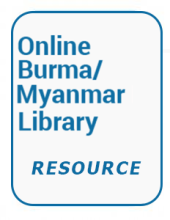Land Library Search
Through our robust search engine, you can search for any item of the over 73,000 highly curated resources in the Land Library.
If you would like to find an overview of what is possible, feel free to peruse the Search Guide.
/ library resources
Showing items 1 through 9 of 67.While Burma’s ethnic states are blessed with a wealth of natural resources and biodiversity, they
have been cursed by the unsustainable extraction and sale of those resources, which has fuelled
This article explains how the family productive strategies of farmer settlers and their perceptions of the forest influence the rate of deforestation.
Forests at the tropical Valley of the Apurimac and Ene rivers (VRAE), the second coca-growing region of Peru, are public common resources and nevertheless privately managed mainly by coca farmers, without effective State control of such use.
... Myanmar’s forest and timber sector has been central to the country’s economy and society, particularly over the last century. Since the colonial era, timber has been a major export revenue earner to Burma/Myanmar and thus subject to much political debate (Bryant 1996).
...the customary rights of communities and
Indigenous Peoples to forests, rangelands, and wetlands are often not
written down or shown on government maps, but they are a fundamental
reality. They cover more than 50 percent of the world’s land surface, yet
Las exigencias en la industria forestal están enfocadas a alcanzar estándares de productividad y un desempeño socialmente responsable con las comunidades, trabajadores y empresas contratistas.
Por sus condiciones biofísicas, los bosques tropicales poseen gran capacidad para ofrecer servicios ecosistémicos.
A video recording of a whole-day conference held on 18 June 2015. The page begins with text presentations. For the video recordings of the event, scroll down to Webcasts....."Co-Organized by RRI and IUCN, in partnership with the Embassy of France in Washington, DC...
El estudio está orientado a evaluar los problemas de la deforestación, mediante la aplicación del Sistema de Información Geográfica (SIG), que viene impactando en el medio ambiente, con el propósito de mostrar las áreas críticas para un mejor ordenamiento espacial y manejo de los recursos; en tal


